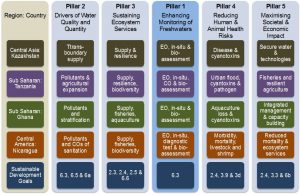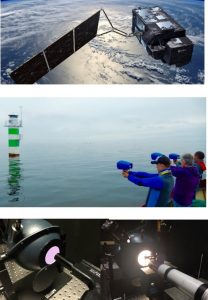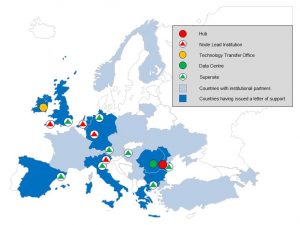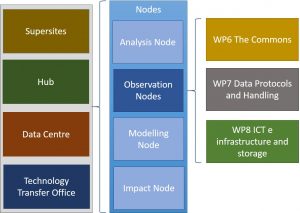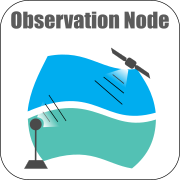
The Observation Node, led by the Plymouth Marine Laboratory (PML), will capitalise on the launch of the next generation, operational Earth Observation (EO) satellite platforms through the European Copernicus programme, along with the rapidly advancing capability of sensors technologies and their miniaturisation which enhances their suitability for deployment on fixed and mobile platforms.
The capability of processing medium and high resolution EO data in near-real time and from long-time series, provides the first opportunity of operationally observing and reconstructing physical and biogeochemical changes occurring in optically complex inland and coastal waters. In addition, higher temporal resolution landcover data and landcover quality (derived from Sentinel 3 Landcover CCI along with Sentinel 2) can also be mapped in higher temporal resolution and changes detected that may impact on water quality and environmental hazards.
The Node will develop sensors that can be networked to provide real/near real time observation capability to address the societal challenges including measures of standard water quality parameters, emerging pollutants and gas exchange between the water/atmosphere boundary. The Node will be responsible for the standardisation of instrumented buoys across the Supersite catchments and ensure that telemetry is in place to enable real time data capture. Super-buoys positioned in estuary/delta systems will include radiometers for satellite validation that could contribute to the AERONET-OC robotic sensor network. Expertise will be provided on in situ techniques and sampling protocols to ensure consistent measurement of physical and biogeochemical water parameters across DANUBIUS-RI compliant with international standards. Calibration and training activities for DANUBIUS-RI partners is central to the Observation Node.
In addition, the rapidly growing interest in Citizen Science provides a wealth of opportunity for in situ measurement and observation to help validate EO products and extend existing monitoring and promoting environmental stewardship.
Together, these developments provide exciting opportunities to study the spatial and temporal dynamics of river-sea systems with a resolution and accuracy that has hitherto been unachievable. It will be the task of this Node to ensure that data are acquired, processed and distributed in compliance with the DANUBIUS-RI Commons.

